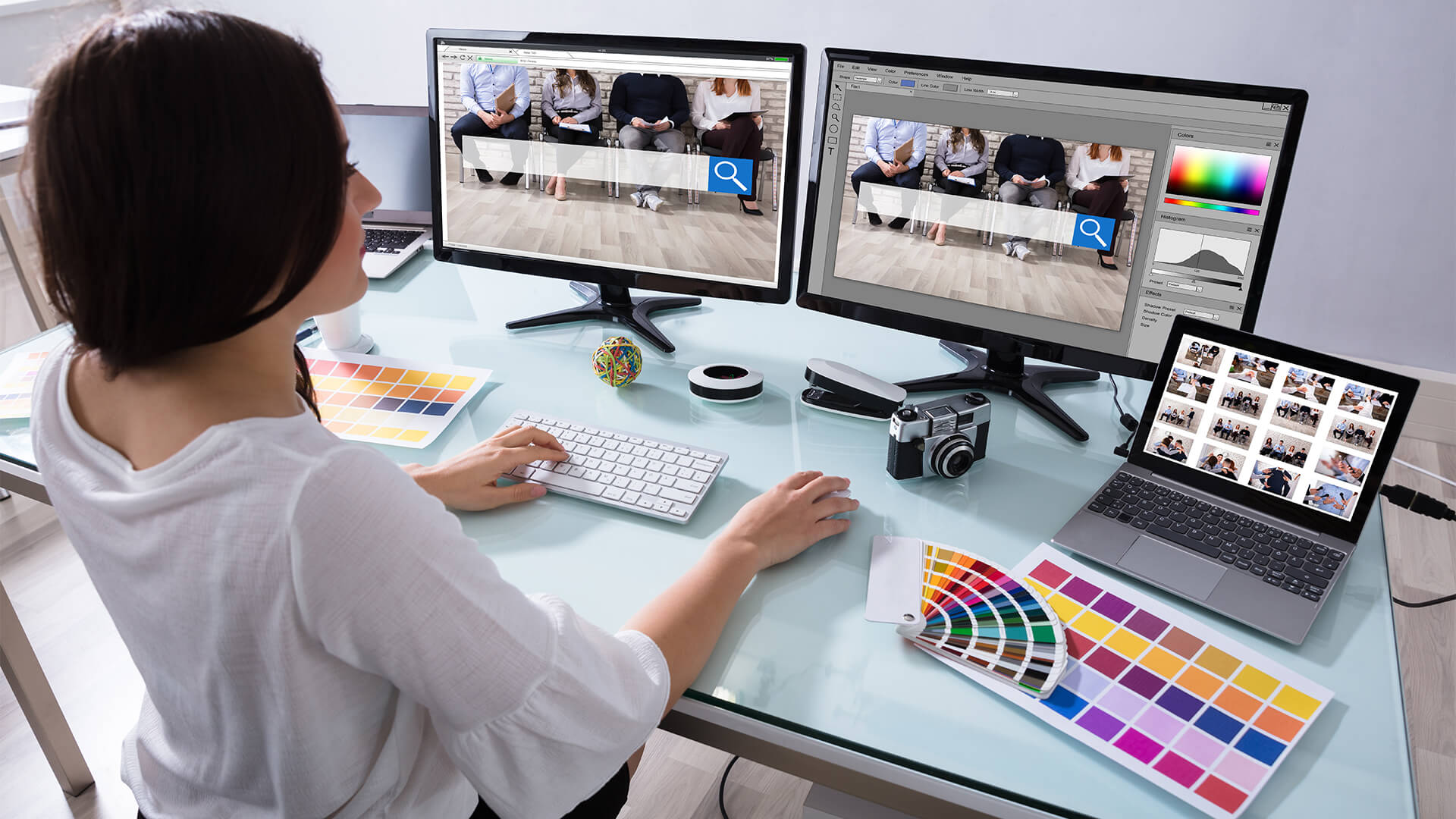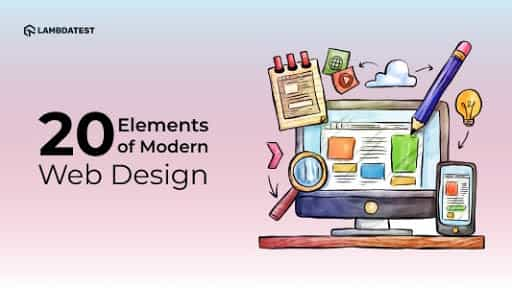All Categories
Featured
Table of Contents
- – Responsive Web Design - A List Apart Tips and ...
- – What Is Web Design (And How Do I Get It Right...
- – Web Design - Entrepreneur Tips and Tricks:
- – What Is Web Design, How To Do It Right And Be...
- – Trajectory: Atlanta Web Design Company Tips a...
- – Web Design Courses & Tutorials - Codecademy T...
- – Arch Web Design: Top-rated Web Design Agency...
- – What Is Web Design? A Comprehensive Guide - ...
- – Beginner's Guide: How To Learn Web Design At...
- – The Top 10 Most Important Elements Of A Webs...
- – Webpage Design (Article) - Further Learning ...
Responsive Web Design - A List Apart Tips and Tricks:
Quick summary Usability and the utility, not the visual style, determine the success or failure of a site. Given that the visitor of the page is the only individual who clicks the mouse and for that reason chooses whatever, user-centric style has established as a basic method for successful and profit-oriented website design - web design frederick md.
and the utility, not the visual style, figure out the success or failure of a site. Given that the visitor of the page is the only person who clicks the mouse and for that reason decides everything, user-centric style has actually ended up being a standard approach for successful and profit-oriented website design. After all, if users can't utilize a function, it might too not exist.
g. where the search box should be placed) as it has already been done in a number of articles; instead we focus on the techniques which, used appropriately, can result in more sophisticated design decisions and simplify the procedure of viewing provided details. Please discover that you might be thinking about the usability-related posts we have actually released before: Concepts Of Excellent Site Design And Efficient Website Design Guidelines, In order to use the principles effectively we initially need to comprehend how users communicate with websites, how they believe and what are the fundamental patterns of users' habits.
What Is Web Design (And How Do I Get It Right)? - 99designs Tips and Tricks:
Visitors glance at each new page, scan some of the text, and click the very first link that captures their interest or slightly looks like the thing they're trying to find. In fact, there are big parts of the page they don't even look at. Most users browse for something interesting (or helpful) and clickable; as quickly as some appealing candidates are found, users click.
If a page supplies users with top quality material, they want to jeopardize the content with ads and the design of the site. This is the reason not-that-well-designed websites with top quality content get a lot of traffic over years. Content is more crucial than the style which supports it.

Users do not check out, they scan. Notice how "hot" locations abrupt in the middle of sentences. This is typical for the scanning process. Extremely simple concept: If a website isn't able to satisfy users' expectations, then designer stopped working to get his job done properly and the business loses money. The higher is the cognitive load and the less instinctive is the navigation, the more prepared are users to leave the site and look for alternatives.
Web Design - Entrepreneur Tips and Tricks:
Neither do they scan webpage in a linear style, going sequentially from one site section to another one. Instead users satisfice; they select the first affordable option. As quickly as they find a link that appears like it may result in the goal, there is a really great opportunity that it will be immediately clicked.
It doesn't matter to us if we comprehend how things work, as long as we can use them. If your audience is going to act like you're developing signboard, then style great billboards." Users want to be able to manage their browser and depend on the consistent information presentation throughout the site.
If the navigation and website architecture aren't intuitive, the number of concern marks grows and makes it harder for users to understand how the system works and how to obtain from point A to point B. A clear structure, moderate visual ideas and easily identifiable links can assist users to find their course to their goal.
What Is Web Design, How To Do It Right And Best Skills - Rock ... Tips and Tricks:

claims to be "beyond channels, beyond products, beyond circulation". What does it suggest? Since users tend to explore websites according to the "F"-pattern, these 3 declarations would be the very first elements users will see on the page once it is packed. Although the design itself is easy and user-friendly, to comprehend what the page has to do with the user requires to browse for the response.
As soon as you have actually accomplished this, you can interact why the system works and how users can take advantage of it. Individuals won't utilize your web website if they can't discover their method around it. 2. Do Not Waste Users' Perseverance, In every task when you are going to offer your visitors some service or tool, attempt to keep your user requirements very little.
First-time visitors want to, not filling long web kinds for an account they may never ever use in the future. Let users explore the website and find your services without requiring them into sharing personal information. It's not reasonable to force users to get in an email address to test the function.
Trajectory: Atlanta Web Design Company Tips and Tricks:
And that's what you desire your users to feel on your web website. The registration can be done in less than 30 seconds as the kind has horizontal orientation, the user doesn't even require to scroll the page.
A user registration alone suffices of an obstacle to user navigation to reduce incoming traffic. 3. Handle To Focus Users' Attention, As sites offer both fixed and dynamic content, some aspects of the user interface attract attention more than others do. Clearly, images are more appealing than the text simply as the sentences marked as vibrant are more attractive than plain text.
Focusing users' attention to specific areas of the website with a moderate use of visual elements can help your visitors to receive from point A to point B without thinking about how it really is supposed to be done. The less concern marks visitors have, the they have and the more trust they can establish towards the business the website represents.
Web Design Courses & Tutorials - Codecademy Tips and Tricks:
4. Aim For Feature Exposure, Modern website design are normally slammed due to their approach of guiding users with aesthetically appealing 1-2-3-done-steps, large buttons with visual effects and so on. But from the style viewpoint these elements really aren't a bad thing. On the contrary, such as they lead the visitors through the site content in an extremely easy and easy to use way.
The website has 9 main navigation options which are noticeable at the first glimpse. What matters is that the material is well-understood and visitors feel comfortable with the method they connect with the system.
com gets straight to the point. No adorable words, no overemphasized statements. Instead a cost: simply what visitors are looking for. An optimum service for efficient writing is touse brief and concise phrases (come to the point as quickly as possible), use scannable design (categorize the content, utilize several heading levels, utilize visual aspects and bulleted lists which break the flow of consistent text blocks), use plain and unbiased language (a promotion doesn't need to seem like ad; give your users some reasonable and objective reason that they must utilize your service or remain on your website)6.
Arch Web Design: Top-rated Web Design Agency For Saas ... Tips and Tricks:
Users are hardly ever on a site to delight in the style; additionally, in a lot of cases they are trying to find the information regardless of the style - web design frederick md. Pursue simplicity rather of complexity. From the visitors' perspective, the finest website design is a pure text, without any advertisements or more content obstructs matching precisely the query visitors utilized or the content they have actually been trying to find.
Finch clearly provides the details about the site and gives visitors an option of options without overcrowding them with unnecessary material. 7. Do not Be Afraid Of The White Area, Really it's actually difficult to overestimate the significance of white space. Not just does it assist to for the visitors, but it makes it possible to view the information provided on the screen.
Complex structures are harder to read, scan, analyze and deal with. If you have the option between separating two design sections by a noticeable line or by some whitespace, it's generally better to use the whitespace service. (Simon's Law): the much better you manage to offer users with a sense of visual hierarchy, the easier your content will be to view.
What Is Web Design? A Comprehensive Guide - Wix.com Tips and Tricks:
The very same conventions and guidelines need to be applied to all elements.: do the most with the least amount of hints and visual components. Clearness: all components should be developed so their significance is not uncertain.
Conventions Are Our Pals, Conventional style of site aspects does not result in a dull web website. It would be an usability nightmare if all websites had various visual presentation of RSS-feeds.
comprehend what they're getting out of a website navigation, text structure, search positioning etc. A typical example from functionality sessions is to translate the page in Japanese (presuming your web users do not understand Japanese, e. g. with Babelfish) and supply your use testers with a job to discover something in the page of various language.
Beginner's Guide: How To Learn Web Design At Home - Medium Tips and Tricks:
Steve Krug recommends that it's much better to, but benefit from conventions when you do not. 10. Test Early, Test Typically, This so-called TETO-principle ought to be used to every website design project as functionality tests often offer into substantial problems and concerns connected to a given design. Test not far too late, not insufficient and not for the wrong factors.
Some essential points to remember: according to Steve Krug, and screening one user early in the project is better than screening 50 near the end. Accoring to Boehm's very first law, errors are most frequent throughout requirements and style activities and are the more expensive the later on they are removed.
That means that you design something, test it, fix it and then evaluate it again. There might be problems which have not been discovered throughout the first round as users were practically blocked by other issues.
The Top 10 Most Important Elements Of A Website Design Tips and Tricks:

This holds for designers. After you have actually worked on a site for few weeks, you can't observe it from a fresh point of view anymore. You understand how it is constructed and for that reason you know precisely how it works you have the knowledge independent testers and visitors of your site wouldn't have.
It can be linked to other areas such as graphic style, user experience, and multimedia arts, however is more aptly seen from a technological standpoint. It has actually become a big part of people's everyday lives. It is hard to imagine the Internet without animated graphics, various styles of typography, background, videos and music.

Throughout 1991 to 1993 the World Wide Web was born. Text-only pages could be viewed using an easy line-mode internet browser. In 1993 Marc Andreessen and Eric Bina, produced the Mosaic web browser. At the time there were multiple internet browsers, however the majority of them were Unix-based and naturally text heavy. There had actually been no integrated method to graphic design components such as images or sounds.
Webpage Design (Article) - Further Learning - Khan Academy Tips and Tricks:
The W3C was developed in October 1994 to "lead the Web to its complete potential by establishing common protocols that promote its advancement and ensure its interoperability." This prevented any one company from monopolizing a propriety browser and programs language, which could have changed the result of the Internet as a whole.
As this has happened the innovation of the web has likewise moved on. There have also been significant modifications in the way people utilize and access the web, and this has actually changed how sites are created. Considering that the end of the internet browsers wars [] brand-new internet browsers have actually been launched. A number of these are open source implying that they tend to have faster advancement and are more helpful of brand-new requirements.
Learn more about Lovell Media Group LLC or TrainACETable of Contents
- – Responsive Web Design - A List Apart Tips and ...
- – What Is Web Design (And How Do I Get It Right...
- – Web Design - Entrepreneur Tips and Tricks:
- – What Is Web Design, How To Do It Right And Be...
- – Trajectory: Atlanta Web Design Company Tips a...
- – Web Design Courses & Tutorials - Codecademy T...
- – Arch Web Design: Top-rated Web Design Agency...
- – What Is Web Design? A Comprehensive Guide - ...
- – Beginner's Guide: How To Learn Web Design At...
- – The Top 10 Most Important Elements Of A Webs...
- – Webpage Design (Article) - Further Learning ...
Latest Posts
Web Design - Wikipedia Tips and Tricks:
Awwwards - Website Awards - Best Web Design Trends Tips and Tricks:
Sustainable Web Design: Home Tips and Tricks:
More
Latest Posts
Web Design - Wikipedia Tips and Tricks:
Awwwards - Website Awards - Best Web Design Trends Tips and Tricks:
Sustainable Web Design: Home Tips and Tricks: